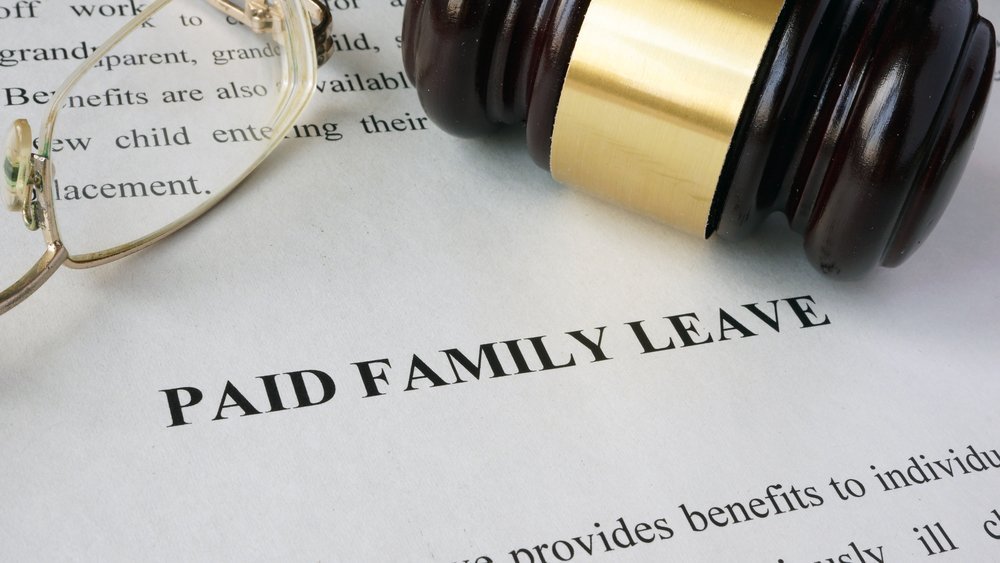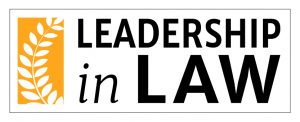EMPLOYMENT LAW UPDATE: New York State’s Paid Family Leave Law

EMPLOYMENT LAW UPDATE: New York State’s Paid Family Leave Law
By: Jeffrey Naness
Overview
Employers of all sizes should start preparing for New York’s Paid Family Leave Benefits Law (the “NYPFL Law”).
The NYPFL has two components, (1) a provision entitling employees to (partial) wage substitutes while they are out on a covered leave and (2) a requirement that employers permit employees to take leave for reasons covered by the NYPFL.
With regarding to the wage substitute element, the NYPFL Law is an extension of New York State’s Disability Benefits Law (“DBL”) (commonly referred to as “short-term disability” or “statutory disability”), and operates like statutory short-term disability coverage. PFL compensation will be funded exclusively through employee contributions deducted from payroll, beginning in July 2017.Short-term disability policies will be required to include paid family leave coverage in the policy.
In addition to the wage replacement aspect, the NYPFL also imposes a leave obligation on employers of all sizes similar to (but not exactly the same as) the FMLA. Starting on January 1, 2018, eligible employees will be entitled to up to eight (8) weeks of benefits and job-protected leave in any 52-week period, with the duration and benefit amounts of the paid family leave (“PFL”) set to increase annually, effective January 1 of each year through 2021.
Employers Covered by PFL
Coverage is extremely broad. New York employers that have employed as few as one individual for 30 consecutive days are covered by the NYPFL Law.
Employee eligibility for PFL
PFL will be available to New York employees who work for a covered employer for 20 hours or more per week for 26 or more consecutive weeks of employment, and to those who have worked on a part-time basis (fewer than 20 hours per week) for 175 days in a 42 consecutive week period.
An eligible employee may be provided the option to file a waiver of family leave benefits (which would exempt him or her from NYPFL Law payroll contributions) if: (1) his or her regular employment schedule is 20 hours or more per work, but he or she will not work 26 weeks (e.g., camp counselors), or (2) his or her regular employment schedule is less than 20 hours per week and he or she will not work 175 days in a 52 consecutive week period.
Types of leaves covered by PFL
PFL is similar to, but different in certain important respects from, Family and Medical Leave Act (FMLA) Leave. Of course, the biggest difference is PFL applies to the smallest employers, unlike FMLA, which only applies to employers with 50 or more employees.
Another big difference is PFL does not cover leaves for an employee’s own medical condition, whereas FMLA does cover such leaves.
In addition, the PFL have a wage substitute component and a mandate that employers grant leaves (while protecting the employee’s position), while the FMLA does not provide for any payment to employees on leave.
PFL can be used for any of three reasons:
- Employees may take PFL to care for a close relative with a serious health condition. “Close relatives” are limited to spouses, domestic partners, children, parents, parents in-law, grandparents, and grandchildren. A “serious health condition” is an illness, injury, impairment, or physical or mental condition that involves either (a) inpatient care or (b) continuing treatment or continuing supervision by a health care provider.
- Employees may use PFL to bond with the employee’s newborn, newly adopted, or newly placed child within the first 12 months after child birth, adoption, or placement of an adopted or foster child.
- Employees may also take PFL for purposes defined under the federal Family and Medical Leave Act (“FMLA”) when their spouse, child, domestic partner or parent is on active duty or has been notified of an impending call or order to active duty.
As discussed above, unlike the FMLA, PFL may not be used for an employee’s own serious health condition. In the case of the Employee’s own medical issue, he/she would have to look toward disability insurance (for non-work-related injury/illness) or workers’ compensation (for work related injury/illness) for benefits.
In terms of right to leave, an employee with his/her own medical issue would have to look toward (1) the employer’s sick leave policy and, if applicable, the New York City Earned Sick Pay law, (2) the FMLA (for larger employers) and/or (3) the New York Human Rights Law or Americans With Disabilities Law, which requires employers to offer reasonable accommodations (which can include leave).
Payroll Deductions to Fund PFL Benefits On June 1, the New York State Department of Financial Services established that the maximum employee contribution shall be 0.126 percent of an employee’s weekly wage, up to and not to exceed the statewide average weekly wage, as established by the New York State Department of Labor.
Employee Notice Obligations
As in the case of FMLA, when the need for PFL is foreseeable, employees must provide their employers with no less than 30 days’ notice in advance of the date on which the leave is to begin. If the need for leave is not foreseeable, the employee must provide notice as soon as practicable.
New York State will create and publish a “Request for Paid Family Leave and Certification” forms, which we can expect to be similar to FMLA forms.
Annual increases to the maximum amount of leave and benefit payments PFL benefits will increase on January 1 of each year, concluding with a final increase on January 1, 2021. Eligible employees will be entitled to weekly benefit payments up to the applicable maximum percentage of their average weekly wage, capped at the applicable maximum percentage of the State’s average weekly wage. The state’s average weekly wage is set annually by the New York State Department of Labor. The schedule for the increases is as follows:
| Starting | Weeks Available | Maximum % of Employee’s Average Weekly Wage | Maximum % of State Average Weekly Wage |
| 1/1/2018 | 8 | 50 | 50 |
| 1/1/2019 | 10 | 55 | 55 |
| 1/1/2020 | 10 | 60 | 60 |
| 1/1/2021 | 12 | 67 | 67 |
Coordination of PFL with other leave laws
Employees may not collect PFL benefits while they are collecting workers’ compensation benefits and are not working.
To the extent an employee is eligible for leave under both the NYPFL and the FMLA, such leave must be taken concurrently.
However, there appear to be cases where employee may be permitted to “stack” PFL and FMLA to obtain more leave than they would under each law separately. This would appear to the case where an employee takes leave for his/her own serious health condition under the FMLA (for example, if the employee has a “serious health condition” relating to her pregnancy). Since this leave is not covered under the PFL, the employee has not used up her PFL leave relating to this condition. Thereafter, once the Employee give birth to her child, she will have the full PFL leave available to her in addition to the FMLA used for her serious health condition.
As notes above, although the NYPFL Law does not provide benefits to employees who take leave for their own serious health condition, employees may be entitled statutory short-term disability benefits (or Workers Compensation benefits where the leaves is due to a work related illness/injury).
Coordination of PFL Benefits with Other Benefits
Employees may elect to supplement PFL benefits, up to their full salary or wages, by using any form of accrued or allotted paid time off, consistent with their employer’s policies, while they are on leave under the NYPFL Law. In the event that an employee elects to take advantage of a paid time off program from his or her employer (e.g., sick leave, PTO, personal leave) at 100 percent of salary in lieu of the monetary compensation to which the employee is entitled under the NYPFL Law, the employer may request reimbursement from its carrier of any benefits due the employee. For example, if an employee earning $100 a day chooses to use his employer’s vacation policy to collect vacation pay (at $100 a day) for each day he takes PFL, the employer would be entitled to the benefits due the employee for each day of the covered absence ($50 in 2018). The employer may seek reimbursement by filing a claim with its insurance carrier prior to the carrier’s payment of such benefits. The actual reimbursement amount may be computed after family leave is complete.
Employers that, as a matter of personnel policy or practice, pay employees their full salaries for portions of family leaves of absence are entitled to seek reimbursement from the insurance carrier providing PFL benefits, much as they would when seeking reimbursement for workers’ compensation benefits.
To the extent that an individual’s employment is subject to the terms of a collective bargaining agreement (“CBA”), his/her employer will be relieved of providing PFL benefits and protections if the CBA provides benefits and protections at least as favorable as those mandated under the NYPFL Law.
Employer’s Obligation to Hold Employee’s Job
Similar to leave taken under the FMLA, PFL taken under the NYPFL Law is job-protected, meaning that upon returning from PFL, an employee is entitled to reinstatement to his/her prior position, or to a comparable position with comparable, pay, benefits, and other terms and conditions of employment.
Also, employers must maintain an eligible employee’s existing health insurance benefits for the duration of PFL as if the employee had continued to work.
What employers should do now
Employers must ensure that their payroll departments or outside payroll vendors are ready to make appropriate deductions from employees’ paychecks starting in July 2017.
Employers must purchase a paid family leave insurance policy from their preferred New York Disability Benefits carrier, or (where applicable) arrange for self-insurance, that will take effect beginning January 1, 2018.
Employers should also review and revise personnel policies as necessary to account for PFL under the NYPFL Law, and its relationship with other policies and statutory requirements.
Finally, employers are required to post the notice by January 1, 2018. During the remainder of 2017, employers should consult the New York State website for a copy of the requisite State-disseminated notice advising employees of their rights under the NYPFL Law.
Administration of NYPFL Leave
All New York employers should pay special attention to documenting and properly classifying all leaves of absence so as not to confuse entitlements under the NYPFL Law with those of the FMLA.
The NYPFL Law will significantly impact those employers that are not covered by the FMLA (e.g., because they have fewer than 50 employees, which is the jurisdictional threshold for the FMLA).
Moreover, as PFL may be taken intermittently, small employers may have to deal with the same burdens that larger employers currently confront (under the FMLA) in dealing with employees who take unexpected time off to care of covered family members with serious health conditions.
Conclusion
Employers of all sizes should be prepared for substantial new burdens and complications due to the NYPFL. This is yet one additional layer of regulation even the smallest employers will have to navigate.
By: Jeffrey Naness
Naness, Chaiet&Naness, LLC
375 North Broadway, Suite 202
Jericho, NY 11753
Tel: (516) 827-4300
Fax: (516) 827-0202
Email address: [email protected]
Webpage: http://ncnlaw.com
(Counseling and Representing Management in Employment Law, Labor Relations and Related Litigation)


